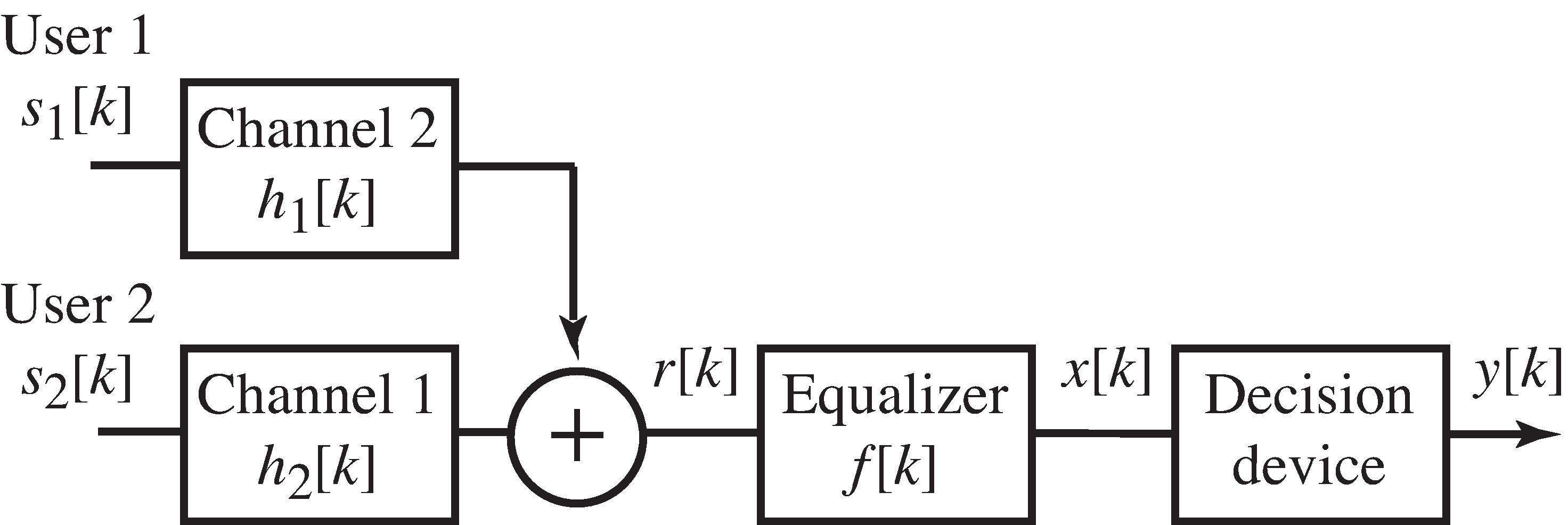| << Chapter < Page | Chapter >> Page > |
This procedure, along with three others that will be discussed
in the ensuing sections, is available on the website in the program
dae.m . Combining the various approaches
makes it easier to compare their behaviors in the examples of
"Examples and Observations" .
The preceding development assumes that the source signal and channel, and therefore the received signal, equalizer, and equalizer output,are all real valued. However, the source signal and channel may bemodeled as complex valued when using modulations such as QAM of [link] . This is explored in some detail in the document A Digital Quadrature Amplitude Modulation Radio , which can be found on the website.The same basic strategy for equalizer design can also be used in the complex case.
Consider a complex delayed source recovery error
where . Consider its square,
which is typically complex valued, and potentially real valued and negative when . Thus, a sum of is no longer a suitable measure of performance since might be nonzero but its squared average might be zero.
Instead, consider the product of a complex with its complex conjugate ; that is,
In vector form, the summed squared error of interest is (rather than the of [link] ), where the superscript denotes the operations of both transposition and complex conjugation.Thus, [link] becomes
Note that in implementing this refinement in the M atlab code, the symbol pair .'implements a transpose, while 'alone implements a conjugate transpose.
The preceding development assumes that the sampled input to the equalizer is symbol spaced with thesampling interval equal to the symbol interval of seconds. Thus, the unit delay in realizing the tapped-delay-line equalizeris seconds. Sometimes, the inputto the equalizer is oversampled such that the sample interval is shorter than the symbol interval, and theresulting equalizer is said to be fractionally spaced. The same kinds of algorithms and solutions can be usedto calculate the coefficients in fractionally spaced equalizers as are used for -spaced equalizers. Of course, details of the construction of the matricescorresponding to and will necessarily differ due to the structural differences.The more rapid sampling allows greater latitude in the ordering of the blocks in the receiver. This is discussed at length in Equalization on the website.
Consider the multiuser system shown in [link] . Both users transmit binary PAM signals that are independent and equally probable symbols.The signal from the first user is distorted by a frequency selective channel with impulse response
The signal from the second (interfering) user is scaled by . The difference equation generating the received signal is
The difference equation describing the equalizer input-output behavior is
The decision device is the sign operator.


Notification Switch
Would you like to follow the 'Software receiver design' conversation and receive update notifications?